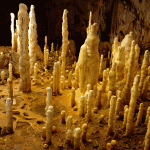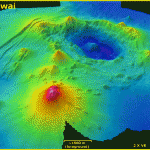
For the first time, analyses of diamonds have demonstrated how deeply life leaves its mark inside the Earth.
All life on Earth is part of the carbon cycle. Plants and animals are made of carbon: they die and are broken down into carbon which returns to the ground or the ocean floor.
The carbon is pulled into Earth’s interior when tectonic plates push under one another, later returning to the surface via volcanic eruptions.
But how deep the carbon is pulled has been unknown until recently. The answer was found by scientists from the University of Alberta in Canada. They analysed different variants of carbon, oxygen and nitrogen in diamonds. Most diamonds form in Earth’s upper mantle, down to depths of 250km. Diamonds from deeper layers are much rarer: the rarest and most expensive are superdeep diamonds, some formed in the lower mantle 660+km below the surface.
The analyses showed that the elements in these diamonds were not in touch with Earth’s surface, so the carbon cycle of life reaches a maximum depth of 660km. The discovery will help geologists better understand carbon quantities in Earth’s interior and the cycle’s influence on climate change.

Analysis of superdeep diamonds from Earth’s lower mantle (orange) shows that they formed from carbon that is outside the main carbon cycle of life on Earth.






